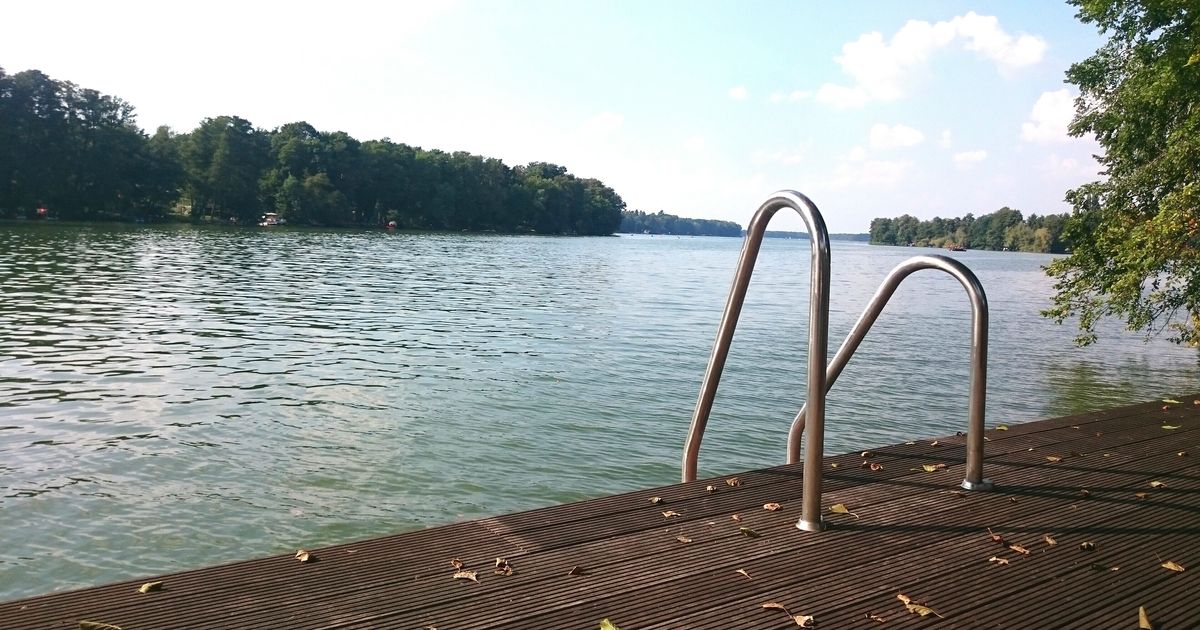You’ve likely heard that drowning is one of the leading causes of death for young children, but you might not know that adults can drown easily as well. According to the Centers for Disease Control and Prevention, there are 2,960 fatal unintentional drownings annually in the United States and 8,080 nonfatal drowning incidents, including among many older people.
There are several scenarios that contribute to this statistic. Andrea Zaferes, a partner at Lifeguard Systems and an aquatic death investigator, said 80% of drowning victims are male, and alcohol is a factor in 1 in 4 emergency room cases of drowning incidents. But other causes of adult drowning include medical emergencies, such as seizures in the water, trying to save another drowning child or person, getting caught in currents or overestimating swimming ability.
Here’s how to spot adult drowning and how to prevent it in the first place:
Someone drowning might be able to listen to your directions at first.
Though you might picture later stages of drowning as a silent, invisible crisis (and you’d be right), there could be a short window of time when a person is trying to communicate distress to others ― and might even be able to hear your directions and follow them, Zaferes said.
She gave an example of her husband saving a woman who swam out in the ocean to retrieve her child’s ball. She went too far and got distressed, but he was able to shout instructions to her.
“She’s panicking, but she did swim all the way out there… he’s shouting at her, ‘Get on your back! Get on your back!’ All of a sudden she heard him and got on her back, and she started to slow down,” Zaferes said.
Drowning looks like silent panic. Check a person’s face when they’re in the water.
If you can see someone’s face, you probably will be able to tell if they are drowning, said Dr. Graham Snyder, an emergency medicine physician at WakeMed in Raleigh, North Carolina, who engineered an anti-drowning collar device.
“When people drown, they always look the same — their eyes are wide open, their mouth is open, and they’re quiet and bobbing up and down. It looks like they’re goofing off. It’s called the instinctive drowning response,” he said.
It can also be the result of holding a breath for a game.
This is for those who are “holding their breath and swimming two or three lengths of the pool,” Snyder said: “I’ve done it a million times, but one thing I didn’t know is that it’s actually pretty easy to hold your breath until you pass out.”
He said this is how even athletes who are swimming as far as they can have been lost to drowning. Trying to hold your breath for a long time is how underwater games can become fatal drownings.
Some people may struggle to get horizontal.
Around 40% of Americans don’t know how to swim, and swimming literacy “varies across income demographics and also across sex,” Snyder said.
Swimming to safety in an emergency involves getting horizontal and starting to progress forward. But those in a panic cannot get to that horizontal position, especially if they are non-swimmers, Zaferes explained.
Even those who have some swimming skills might start to try to survive in a vertical condition. But the more tense you get and the more you take big breaths in, you are going to sink more. “If you can relax and hold your breath and get onto your back, most people will float,” Zaferes said.
Jolanta Bochen / EyeEm via Getty Images
How to prevent drowning
Though you can’t plan for every incident, there are steps you can take to prevent drownings and to move quickly to save lives.
You may have heard of dry drowning, or secondary drowning, which can happen after a near-drowning when water gets into the lungs. A person may get out of the water and then have complications. Dr. Samuel Prater, the medical director of Memorial Hermann TMC Emergency Department in Houston, said dry drowning involves respiratory distress that can quickly lower oxygen levels. This can occur for up to 48 hours after the near-drowning, though typically it is within a few hours. So it’s good to get checked out even if you think you are OK at first.
Don’t be afraid to call 911, even if you aren’t completely sure someone is drowning, Snyder said. Snyder stressed that no emergency medical technician would ever be annoyed about coming out and then learning someone wasn’t actually drowning.
First responders will also stay on the phone walking you through CPR. CPR recommendations have changed to not include rescue breaths, except in the case of drownings, when they are a must, Snyder pointed out. Start pushing hard and fast on the victim’s chest, and use rescue breaths (aka mouth-to-mouth resuscitation in which you blow air into a person’s lungs) in between pumps. Snyder said not to stress about knowing how to do CPR perfectly, just to try it. “Push hard, push fast, never stop.”
Drowning can often happen when a person is trying to save someone else. Instead of hopping in, throw an object in to save a drowning person, such as a pool noodle, a lawn chair, an empty milk jug, a basketball or anything else that’s nearby.
Zaferes emphasized that nobody should try to save someone without proper training because they can endanger themselves and drown, too. If you do end up in the water attempting to save someone and they climb on you, as they instinctively will, swim down.
Think about how you could access help if, say, your boat started to sink in the middle of a lake. Zaferes also stressed that adults should wear life jackets and shouldn’t swim alone, especially when boating or doing other water sports.
Drownings can easily happen with multiple people nearby who don’t notice, such as at a party. Use “watch cards,” a system in which people hold a card during a party near a pool or lake that states they are “on duty.” During this time, they don’t use their phone, talk to others, drink or do anything except count the bodies in the pool to prevent drownings. Do this for 15 minutes at a time and then switch watchers.
Finally, Snyder added that parents should always be sober when they are watching their kids around water.


